| | Triticale grain composition | General nutritional information | Anti-nutritional compounds in triticale grain
Triticale Grain Composition
In order to place a value on triticale grain in feed formulations, it is necessary to compare triticale composition to other feed sources grown under Canadian conditions.
The following tables (Tables 1 to 6) include data from a limited Canadian database as well as from other sources. Although relative values from non-Canadian sources are likely to be reliable, caution should be used in applying the specific values from such sources. Keep in mind these are averages from samples of non-Canadian varieties grown under non-Canadian conditions. Country or other origin of the data is indicated where appropriate.
In general:
- Canadian triticale has stable compositional quality across environments.
- Total starch levels in triticale are equal to or higher than for wheat.
- Triticale has a high lysine content, expressed as a percentage of protein content, and a high lipid content.
- The protein content of triticale is lower than that found in Canada Western Red Spring (CWRS) wheat, but higher than that in barley, oat, rye and corn.
- Triticale has a desirable mineral content for feed applications.
- Triticale fibre content tends to be higher than that of wheat.
- The vitamin content of triticale is comparable to that of wheat and rye.
- In a single multi-year, multi-site and multi-variety study, Canadian analyses of triticale variability for amino acid content as a percentage of protein content indicated that sample variability was in a range similar to that expected for other grains. The highest variability was found in methionine, cystine and tyrosine (Table 5).
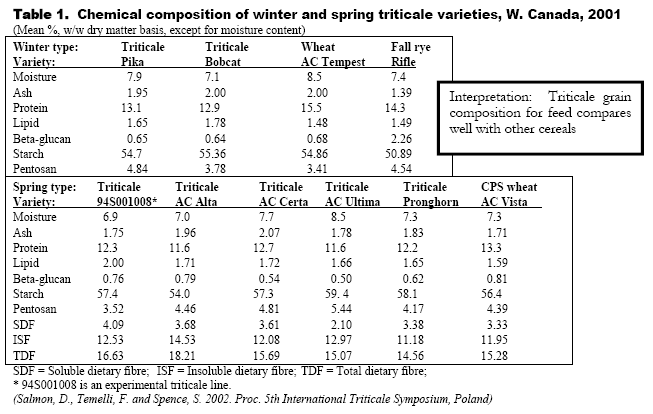
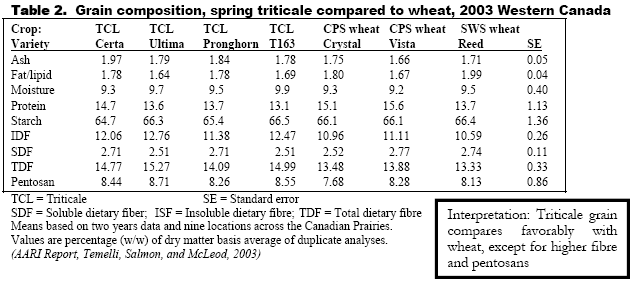
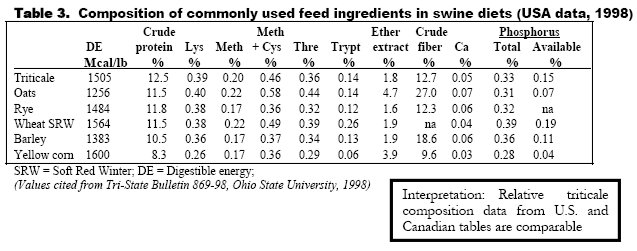
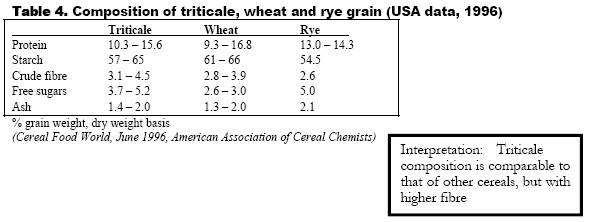
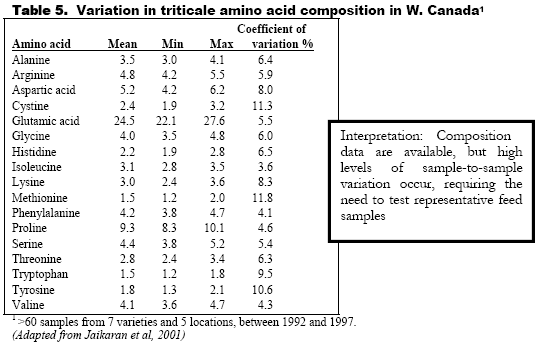
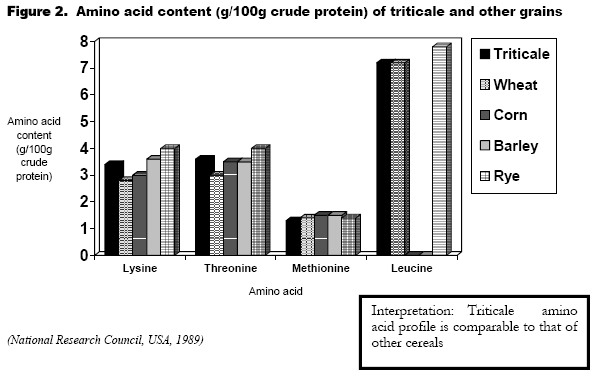
General Nutritional Information
- Triticale is a suitable, high energy source for all classes of animals, with energy levels comparable to or better than other Canadian cereals.
- Triticale digestibility is comparable or superior to that of other Canadian cereals.
- Triticale starch fermentation is similar to barley and oats, and its enzymatic digestion is higher, which has implications for digestive efficiency beyond the rumen in ruminant animals.
- Net protein utilization of triticale can be superior to that of other cereals (e.g. wheat) which may reflect the high levels of lysine (as % of total protein) found in triticale, and its high protein efficiency.
- In Western Canada and internationally, lysine content of triticale is typically higher than in barley.
- Using triticale as a feed energy source for monogastric animals often means that a reduced amount of protein supplementation is needed in the diet.
A detailed nutritional database for triticale grain grown under Canadian conditions is not available. Very limited data from other sources are available, and are presented here. Although relative values from non-Canadian sources are likely to be reliable, caution should be used in applying any specific values, which are averages from samples of non-Canadian varieties grown under non-Canadian conditions. Country or other origin of the data is indicated.
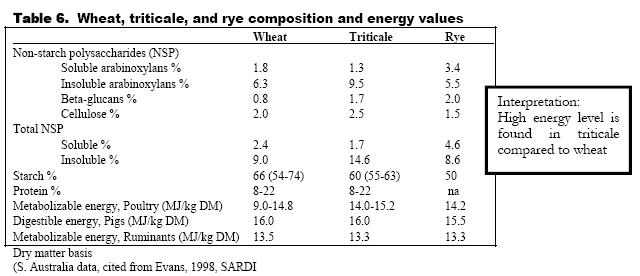
Anti-Nutritional Compounds in Triticale Grain
By the mid 1980s, triticale was suspected to contain a number of potentially anti-nutritional compounds. These compounds are at lower levels in triticale than in rye. The extent that any of these compounds may hinder the feed efficiency of triticale is unknown; quantified, relevant data on this topic are not available. New data is needed on these compounds, for the modern Canadian varieties grown under Canadian conditions.
Compounds that might potentially block the full use of nutrients include:
- Pentosans (produce ‘gummy’ manure in monogastrics)
- Enzyme inhibitors
- Pectins (binding agents that limit digestibility)
- Alkyl-resorcinols
- Tannins
- Acid-detergent fibers
- Protein-polysaccharide complexes
- Beta-glucans
Some of these may be influential in limiting feed intake, especially in poultry, but little is known about these compounds, and research about them is rare. The levels of these compounds in Canadian triticale varieties in comparison to other Canadian feed grains are not known. International consensus is that these compounds are likely not as high in modern varieties as in the earliest triticale varieties pre-1980, although hard data to confirm this view are unavailable. |
|